Efest PRO C1 Charger 2017



This is a simple usb powered single cell LiIon charger without any settings.




It arrived in a small cardboard box with specifications on it.

The box included the charger, a usb cable, a warranty card and the instruction sheet.

The charger has a micro usb input for power.

The only user interface is a single led that is red while charging and green at all other times.

Specifications are on the bottom, but not very easy to read.


The slots uses the classical slider construction and it works fine.
The slots can work from 30 mm to 70.5mm. This means that it will handle most 18650/26650 batteries.







The charger can handle 71 mm long batteries including flat top cells.
The charger current is on the high side for regular 14500 and 18350, but is fine for Efest IMR batteries.
Measurements
- When not connected to power it will discharges with less than 0.35mA.
- When power is connected with a full battery, the charger will discharge with less than 0.5mA
- Below 0.6V the charger will not detect a battery
- Between 0.6V and 3.0V the charger will charge with about 70mA to 100mA
- Above 3.0V the charger will use regular charging.
- Charger will restart when voltage drops slightly.
- It will restart charging on reinsertion of the battery or power cycling.
- Usb power consumptions when idle without battery is 9mA
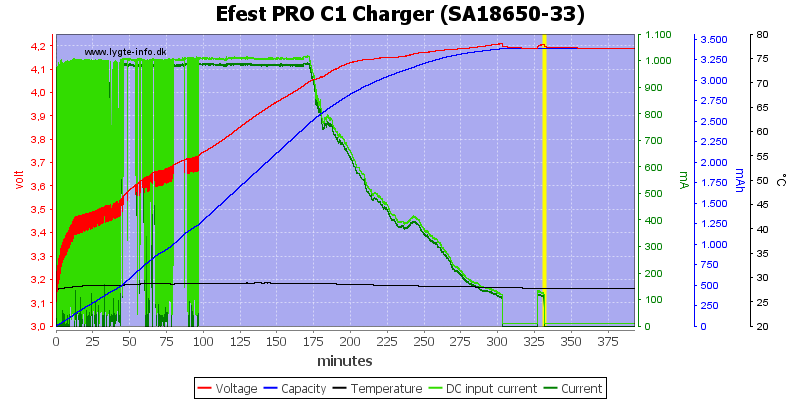
The charger do sometimes do some strange things at the start of the charge, but the charger is a regular CC/CV charge.
The termination current is slightly above 100mA, but the restart voltage is only slightly below 4.20V and the charger will restart again.
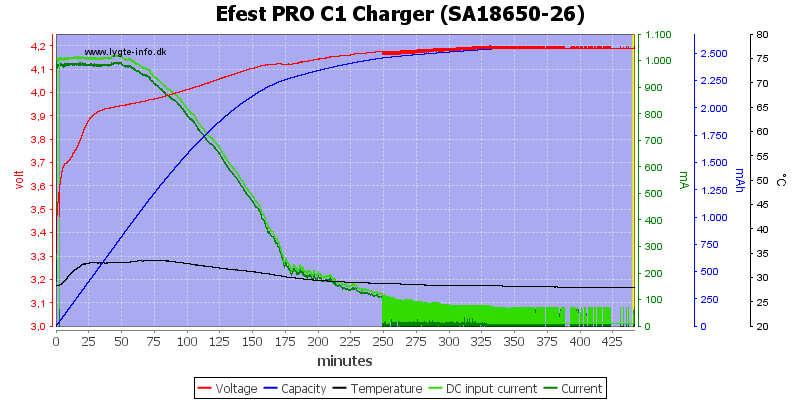
This battery is a bit more used. The startup was clean, but the termination was problematic.

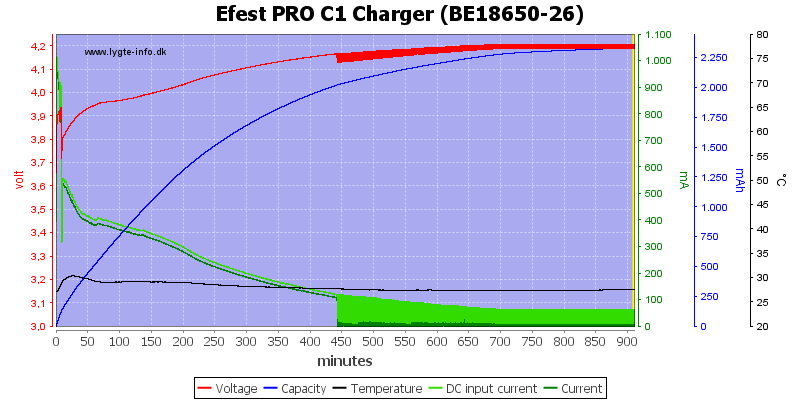
And the same with these two cells.
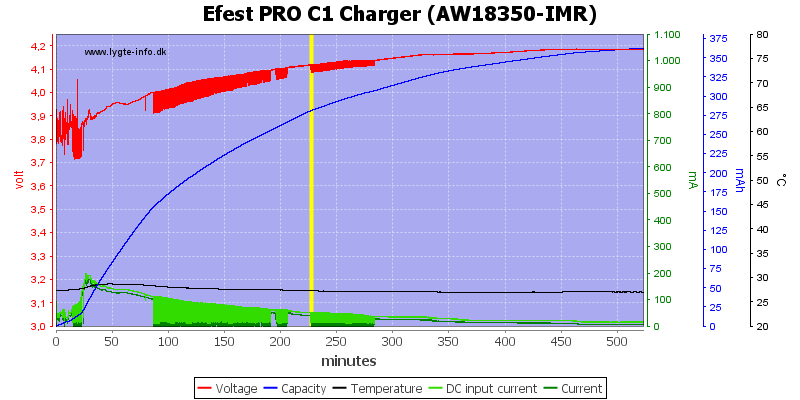
With this old cell the charger did not really get into regular charge mode, but it did fill the cell.
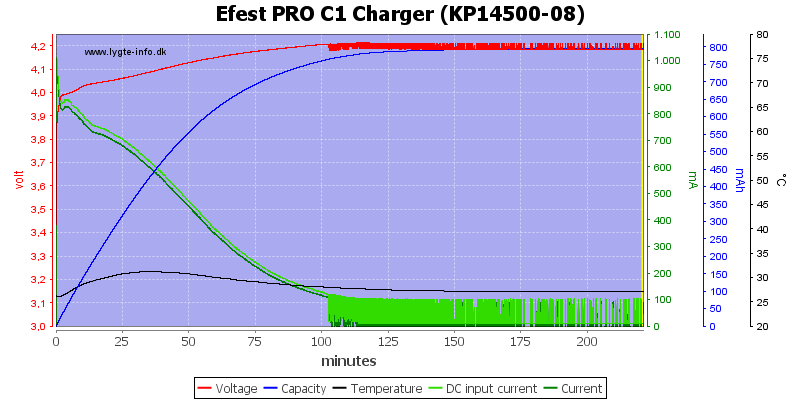
With this small cell the charge current is fairly high (It is not an IMR cell) and there is the same termination problem.

Adding a 0.5ohm resistor with the 5V usb power to simulate a long cable or weak power supply did not present any problem for the charger, but it takes longer time to charge.
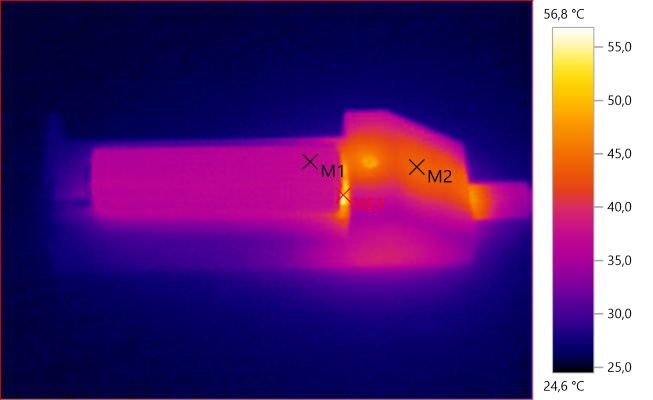
M1: 37,2°C, M2: 43,8°C, HS1: 56,8°C
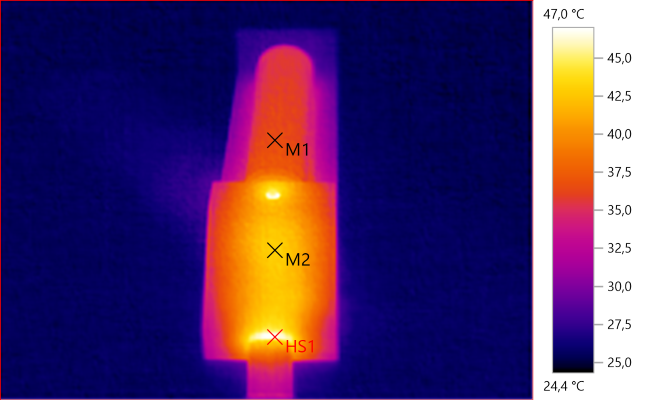
M1: 36,7°C, M2: 43,2°C, HS1: 47,0°C
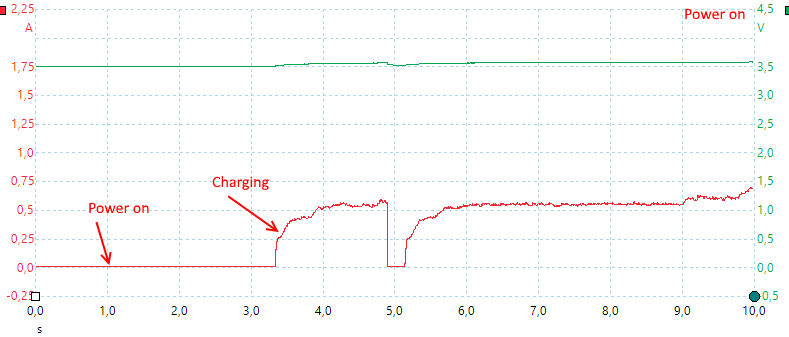
The charger needs about 2 seconds to start, then it turns the current on, this time at 0.5A. A bit later it turns off and tries again.
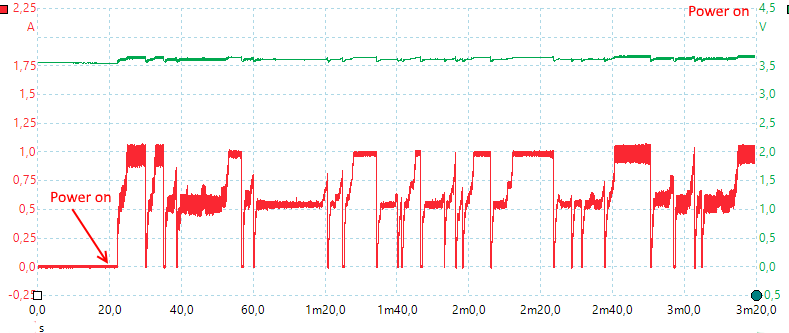
I tried it a couple of times and here I captured it over a longer timespan. It will change to regular 1A charging after some time as can be seen on the charger curves above.
Note: For these traces I have a 0.1ohm resistor in series with the cell, but the SA18650-33 tested above was a new cell with fairly small internal resistance, i.e. it do not look to be depend on internal resistance.
Conclusion
This charger is for LiIon only and for small cells it must be IMR (i.e. high current) cells. For new cells the charger is a good charger, but when the cell has been used for some time the charger will have problems with terminations. This means it is best to keep an eye on the charger and remove the cell when the green led turn on for a short time. It is not important to that first time it happens, but within a few hours.
I will rate it fairly good for IMR batteries, but only acceptable for other LiIon batteries, due to the termination.
Notes
The charger was supplied by Efest for review.
Here is an explanation on how I did the above charge curves: How do I test a charger






























